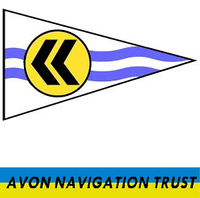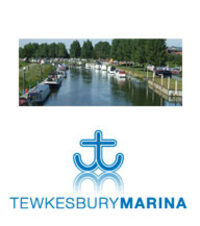Many thanks to Tewkesbury Marina for facilitating this camera's location and to Avon Navigation Trust for capitally funding its installation. Tewkesbury, situated in Gloucestershire, is a town positioned at the confluence of the River Severn and the River Avon, along with the minor tributaries of Swilgate and Carrant Brook. It lends its name to the Borough of Tewkesbury, where it stands as the second largest settlement. The origin of the name Tewkesbury can be traced back to Theoc, a Saxon individual who established a hermitage there in the 7th century. In Old English, it was referred to as Theocsbury.According to the Chronicle of Tewkesbury, the area received its first Christian worship through the efforts of Theoc, a missionary hailing from Northumbria. In the mid-7th century, Theoc constructed his cell near a gravel spit where the rivers Severn and Avon merge. Subsequently, a monastery replaced the cell in 715, although no identifiable remains of the original structure have been discovered.During the 10th century, the religious foundation in Tewkesbury became a subordinate priory to the Benedictine Cranborne Abbey in Dorset. In 1087, William the Conqueror bestowed the manor of Tewkesbury upon his cousin Robert Fitzhamon, who, together with Giraldus, the Abbot of Cranborne, established the present-day abbey in 1092. Construction of the abbey church commenced in 1102, utilizing Caen stone imported from Normandy, transported via the Severn.Robert Fitzhamon sustained injuries at Falaise in Normandy in 1105 and passed away two years later. However, his son-in-law, Robert FitzRoy, the natural son of Henry I and Earl of Gloucester, continued to support the building endeavors. The abbey received significant patronage in later years from Lady Eleanor le Despenser, the last of the De Clare heirs of FitzRoy. During the High Middle Ages, Tewkesbury Abbey ranked among the wealthiest abbeys in England.Following the Battle of Tewkesbury on May 4, 1471, during the Wars of the Roses, some defeated Lancastrians sought refuge in the abbey. The victorious Yorkists, led by King Edward IV, forcefully entered the abbey, leading to bloodshed. As a result, the building remained closed for a month until it underwent purification and re-consecration.At the dissolution of the monasteries, the last abbot, John Wakeman, surrendered the abbey to King Henry VIII's commissioners on January 9, 1539. As a former monk from an endowed community, Wakeman received an annuity of 400 marks, which ceased upon his ordination as the first Bishop of Gloucester in September 1541. However, the people of Tewkesbury saved the abbey from destruction, asserting that it was their parish church and thus their right to preserve it. They purchased it from the Crown for the value of its bells and lead roof, which would have otherwise been salvaged and melted down, leaving the structure as a roofless ruin. The transaction amounted to £453.The abbey's bells warranted a separate freestanding bell tower, an uncommon feature in English sites. Following the dissolution, the bell tower served as the borough's jail until its demolition in the late 18th century. The central stone tower initially had a wooden spire, which collapsed in 1559 and was never reconstructed. Restoration work, overseen by Sir George Gilbert Scott, took place in the late 19th century and was unveiled on September 23, 1879. The project continued under the direction of his son, John Oldrid Scott, until 1910, including the addition of the rood screen in 1892.
The vicinity of Tewkesbury frequently encounters flooding. Generally, such flooding causes minimal property damage due to the town's location surrounded by extensive floodplains, limiting urban development and the town's expansion. However, severe flooding events have resulted in property damage and disruptions to transportation links, with notable incidents occurring in 1947, 1960, and 2007. To address this concern, a strategically positioned Farson Digital webcam is employed to provide real-time monitoring of water levels and road conditions in the area.








